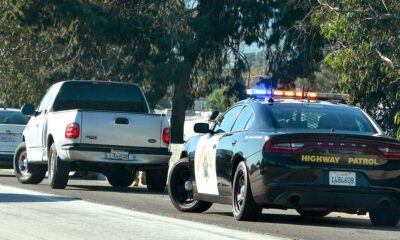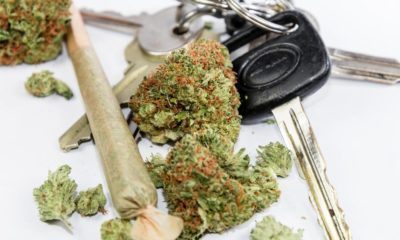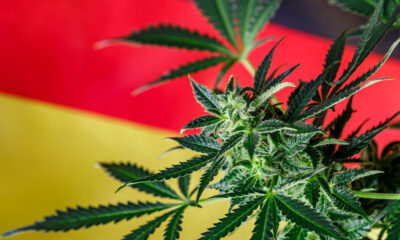
Legal
Police Ignore Experts on Pot & Driving (Again)
Evaluating most impairment goes by blood alcohol content, which doesn’t work for cannabis.
Now that recreational cannabis is legal in Illinois, the America’s sixth-most populous state, a collection of lawmakers, law-enforcement officials and public-safety advocates are now doing what’s been done almost everywhere else marijuana’s been legalized: ignoring advice from experts and pursuing yet another demonstrably failed punitive policy.
As Plano, Illinois-based WSPY reported, Gov. JB Pritzker has created an Illinois State Police-run “marijuana DUI task force,” an expert panel tasked with looking at data from other states and weighing recommendations from subject-matter experts before making any setting some kind of alcohol-like intoxication threshold for cannabis users.
Currently, according to Chicago’s CBS affiliate, that threshold is 5 nanograms of THC metabolite per mililiter of blood, the same standard seen in several other states.
Pritzker is doing this because he is a politician, and he must consider the immense power of the law-enforcement lobby, which has just as predictably sown fear and doubt about their ability to keep roadways safe now that cannabis is no longer illegal for all adults.
Pritzker and other pro-weed lawmakers “know we have no reliable device to test for impairment on our roadways, for example,” the Illinois Association of Chiefs of Police said in a statement released around the time Pritzker signed Illinois’s legalization plan, approved by the state Legislature in May 31, into law. “They know more people will die on our roadways.”
But do they? Actually, no! They do not know this, because nobody “knows this.” At least the people who study these things for a living don’t.
As a study released by the Colorado Department of Transportation found, while there has been an increase in the number of fatal traffic accidents involving a driver with cannabis metabolites in their blood, there is as yet no proof that cannabis intoxication had anything to do with it (far less that cannabis legalization, which is not what led most cannabis users to use cannabis, was a factor). This was not an outlier. Researchers from the University of Oregon also looked into this, and found that states that did not legalize cannabis “saw similar increases in marijuana-related fatality rates” compared to legal states.
(Drugged driving deaths are absolutely on the increase, a Governors Highway Safety Association report found, but “drugged” includes drivers smashed on prescription pills like opiates and did not dis-aggregate for cannabis users — and particularly actively stoned cannabis users driving after legalization.)
The American Automobile Association, or AAA, can safely be described as pro-car. AAA wants people to drive — maybe even drive more, according to some critiques of AAA lobbying — and to drive safely.
The gold standard for evaluating motorist impairment is the blood-alcohol content (BAC). This is because the level in your body of alcohol, which is water soluble, has a direct correlation to how intoxicated you are. But marijuana is not water-soluble, and is not absent from your body when its effects are absent. It’s fat soluble, and can linger for days or weeks after the effects have worn off.
Everybody knows this, including the Illinois State Police, even if they won’t acknowledge it like the AAA. As recently as 2016, the AAA believed that setting marijuana-intoxication limits for motorists was not the way to do it.
In May of that year, before California, Maine, Massachusetts and Nevada all legalized recreational cannabis, AAA took a look at the marijuana-while-driving issue and declared that arbitrary intoxication limits, like Illinois’s, are bad policy.
As CBS’s San Francisco affiliate reported at the time:
But the study by AAA’s safety foundation says the limits have no scientific basis and can result in innocent drivers being convicted, and in guilty drivers being released.
“There is understandably a strong desire by both lawmakers and the public to create legal limits for marijuana impairment in the same manner we do alcohol,” said Marshall Doney, AAA’s president and CEO. “In the case of marijuana, this approach is flawed and not supported by scientific research.”
At least one state has listened to this advice, and then only sort of. Earlier this spring, an expert panel convened in Michigan, where voters legalized cannabis last November, recommended lawmakers not set an intoxication limit for motorists who use cannabis. That was not an allowance for lawmakers to do nothing, mind you. In Michigan, all cannabis users run the risk of getting popped with a DUI at all times, as Michigan has a zero-tolerance law still on the books, and thus far, the law has not been altered.
Not having an arbitrary limit will require one big thing: for the police to do more work. In California, where there is no THC limit but a prohibition on driving while intoxicated, police would have to perform tests or otherwise determine with methods other than a handy digital device if the parties involved in an accident were intoxicated. They would have to deal with uncertainty and doubt. That’s not fun, but that’s what the experts are recommending. Whether they’ll be heeded is another issue — a political one.
TELL US, do you drive high?


























